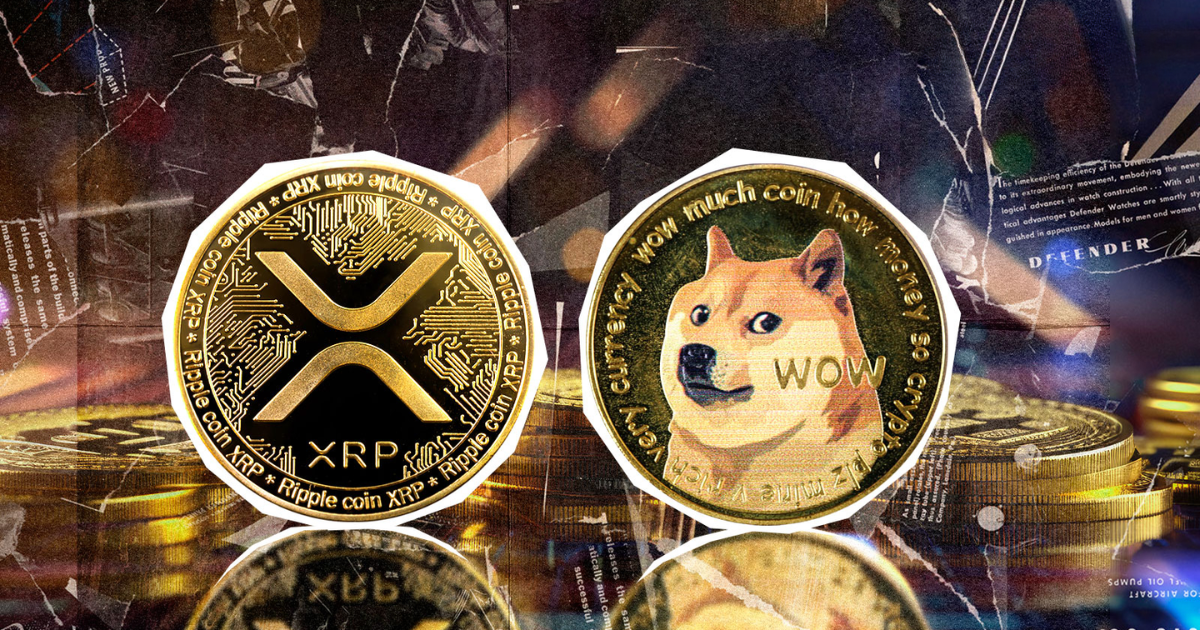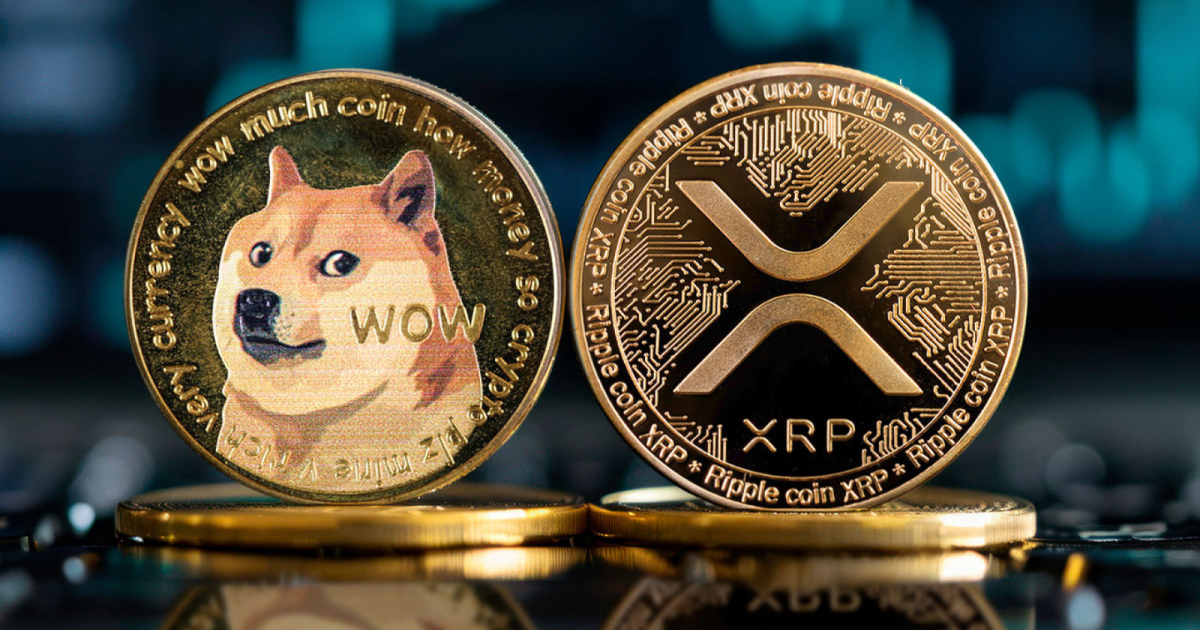Dogecoin and XRP Dip on profit-taking signals is a common theme, reflecting traders locking in gains before big economic news. In the latest pullback, bitcoin dropped only about 1%, but Dogecoin and XRP Dip around 2.5% each. This slide followed a week of headlines: President Trump’s proposal to jack up EU tariffs briefly spooked markets, but a delay of the tariffs helped calm things..
Key Takeaways:
- Traders booked gains in recent rallies, leading Dogecoin and XRP to fall about 2.5% each in a pullback. Bitcoin was relatively steady.
- President Trump’s surprise tariff announcement initially spiked volatility before the plan was delayed. Analysts say this news gave the market “a welcome stability boost” and induced a risk-on mood.
- All eyes are now on U.S. inflation – particularly the Fed’s Core PCE gauge. A downside surprise in CPI or PPI could lift crypto by rekindling rate-cut hopes. Conversely, hotter inflation is likely to reinforce a risk-off move.
- Institutional interest remains strong despite short-term dips. BlackRock’s Bitcoin spot ETF (IBIT) saw 30 consecutive days of net inflows in late May, underscoring continued demand for crypto.
Historical Volatility of Dogecoin and XRP

Both tokens have rollercoaster histories.
Dogecoin began in 2013 as a meme-based altcoin. Since then it has seen wild runs and crashes: for example, in 2021 DOGE rocketed to about $0.73 on news like Elon Musk’s SNL appearance (a 15,769% gain from the year’s start) and then plummeted over 90% by mid-2022. Doge’s recent surge is more modest: it climbed to roughly $0.47 in late 2024 amid election-year crypto optimism.
XRP’s journey has been volatile too. It traded above $3.80 in early 2018, though Ripple’s CTO later clarified that peak included a “kimchi premium” on Korean exchanges. Since then XRP’s price languished amid legal uncertainty (Ripple was sued by the SEC in 2020). In all, the Dogecoin and XRP Dip seen now is part of familiar altcoin cycles: big rallies often end with profit-taking and pullbacks.
Market Sentiment and Expert Insights

Experts note that recent losses of Dogecoin and XRP Dip stem largely from profit-taking and shifting risk sentiment. Mudrex CEO Edul Patel explains that investors have been “booking profits at higher levels” as a strong U.S. dollar and trade developments made stocks more appealing. BuyUcoin’s Shivam Thakral agrees, saying Bitcoin (and its altcoin peers) “witnessed a slight dip due to traders liquidating positions for profit booking,” and that market focus has shifted to April’s CPI and PPI data.
Patel adds that if U.S. inflation comes in lower than expected again, it could “boost Bitcoin by increasing expectations for rate cuts” – which would likely lift altcoins too. Avinash Shekhar (Pi42) observes that the recent crypto rally more broadly reflects “growing investor confidence amid improving global macroeconomic signals”. Amid this cautious optimism, institutions still appear engaged: for example, BlackRock’s Bitcoin ETF saw steady inflows (30 days straight) through late May, signaling that long-term interest in crypto remains intact.
Inflation Data and the Crypto Market

The looming U.S. inflation reports are now the big focus. Historically, high inflation readings have pressured crypto; in late March, a hotter-than-expected PCE print knocked Bitcoin, Dogecoin and XRP Dip downward as traders worried the Fed would keep rates high. As one crypto news analysis noted: high inflation may “drive rate hikes… reducing risk appetite and pushing Bitcoin prices lower as investors flee risk-on assets,” with XRP and DOGE also trading in losses when PCE surprised to the upside.
The opposite is true if inflation cools. Analysts point out that a surprise drop in inflation could rekindle crypto buying; in that case, the recent pullback could reverse quickly. Whether this Dogecoin and XRP Dip turns out to be a brief pause or a longer correction will depend on the data. For now, most traders are treating it as a routine pullback, not a change of trend.
Conclusion

In sum, the Dogecoin and XRP Dip reflects routine market dynamics. Analysts emphasize that underlying momentum and institutional inflows remain strong, suggesting this pullback may be temporary. Traders should watch Friday’s Fed-linked inflation report closely, as any surprise could swiftly reshape sentiment and set the next direction for crypto. The market’s reaction to those numbers will determine whether this dip proves a buying opportunity or a signal to stay cautious in the near term.











